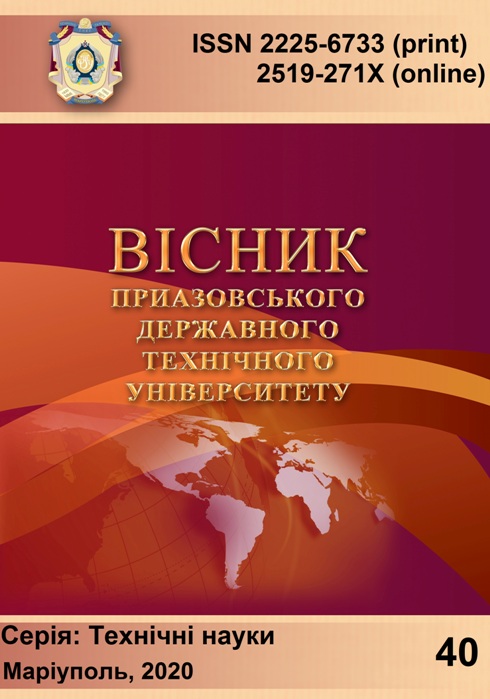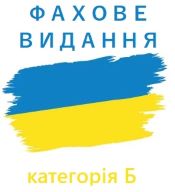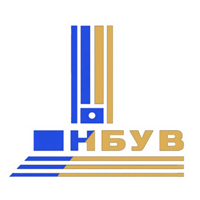Закономірності спучування окисленого графіту в гравітаційно-падаючому шарі
DOI:
https://doi.org/10.31498/2225-6733.40.2020.216033Ключові слова:
з’єднання інтеркальованого графіту, термографеніт, розширення, об’ємна щільність, ізотермічна ділянкаАнотація
Розглянуті основні закономірності термічного розширення інтеркальованого графіту в шарі, що гравітаційно падає в контексті температурного поля печі. Показано, що в умовах гравітаційно-падаючого шару частинки інтеркальованого графіту майже миттєво набувають температури середовища. Знайдено закономірності, що зв’язують об’ємну щільність термографеніта з температурою ізотермічної зони печіПосилання
Перелік використаних джерел (ДСТУ):
Уббеладе А.Р. Графит и его кристаллические соединения / А.Р. Уббеладе, Ф.А. Льюис. – М. : Мир, 1965. – 256 с.
Физико-химические свойства графита и его соединений / И.Г. Черныш [и др.]. – К. : Наукова думка, 1990. – 200 с.
Eur, Pät. Appl. 87489, Cl, C04B 35/54. Expanded graphite particles / A. Hirschvogel, H. Zimmermann. – Publ. 07.09.83.
Махорин К.Е. Вспучивание природного графита, обработанного серной кислотой / К.Е. Махорин, А.П. Кожан, В.В. Веселов // Химическая технология. – 1985. – № 2. – С. 3-6.
Вспучивание графита в плотном и взвешенном слоях / К.Е. Махорин, А.П. Кожан, В.В. Веселов, В.Н. Александров // Химическая технология. – 1987. – № 2. – С. 43-49.
А. с. 1579008 СССР, МКИ С 01 В 31/04. Способ получения расширенного графита / В.А. Маслов, В.И. Паук, Ю.П. Пустовалов и др. – № 4392502; приоритет изобретения 15.03.1988 (ДСП).
References:
Ubbelade A.R., L’iuis F.A. Grafit i ego kristallicheskie soedineniya [Graphite and its crystal-line compounds]. Moscow, Mir Publ., 1965. 256 p. (Rus.)
Chernysh I.G., Karpov I.I., Prikhod’ko G.P., Shai V.M. Fiziko-himicheskie svojstva grafita i ego soedinenij [Physical and chemical properties of graphite and its compounds]. Kiev, Naukova dumka Publ., 1990. 200 p. (Rus.)
Hirschvogel A., Zimmermann H. Expanded graphite particles. Patent Eur, no. 87489, 1983.
Mahorin K.E., Kozhan A.P., Veselov V.V. Vspuchivanie prirodnogo grafita, obrabotannogo sernoj kislotoj [Extrusion of natural graphite treated with sulfuric acid]. Himicheskaja tehnologija – Chemical Technology, 1985, no. 2, pp. 3-6. (Rus.)
Mahorin K.E., Kozhan A.P., Veselov V.V., Aleksandrov V.N. Vspuchivanie grafita v plotnom i vzveshennom slojah [Graphite swelling in dense and suspended layers]. Himicheskaja tehnologija – Chemical Technology, 1987, no. 2, pp. 43-49. (Rus.)
Maslov V.A., V.I. Pauk, Pustovalov Yu.P. Sposob polucheniya rasshirennogo grafita [The method of obtaining thermally expanded graphite]. Patent USSR, no. 1579008, 1988. (Rus.)
##submission.downloads##
Як цитувати
Номер
Розділ
Ліцензія
Журнал "Вісник Приазовського державного технічного університету. Серія: Технічні науки" видається під ліцензією СС-BY (Ліцензія «Із зазначенням авторства»).
Дана ліцензія дозволяє поширювати, редагувати, поправляти і брати твір за основу для похідних навіть на комерційній основі із зазначенням авторства. Це найзручніша з усіх пропонованих ліцензій. Рекомендується для максимального поширення і використання неліцензійних матеріалів.
Автори, які публікуються в цьому журналі, погоджуються з наступними умовами:
1. Автори залишають за собою право на авторство своєї роботи та передають журналу право першої публікації цієї роботи на умовах ліцензії Creative Commons Attribution License, яка дозволяє іншим особам вільно розповсюджувати опубліковану роботу з обов'язковим посиланням на авторів оригінальної роботи та першу публікацію роботи в цьому журналі.
2. Автори мають право укладати самостійні додаткові угоди, які стосуються неексклюзивного поширення роботи в тому вигляді, в якому вона була опублікована цим журналом (наприклад, розміщувати роботу в електронному сховищі установи або публікувати у складі монографії), за умови збереження посилання на першу публікацію роботи в цьому журналі.









